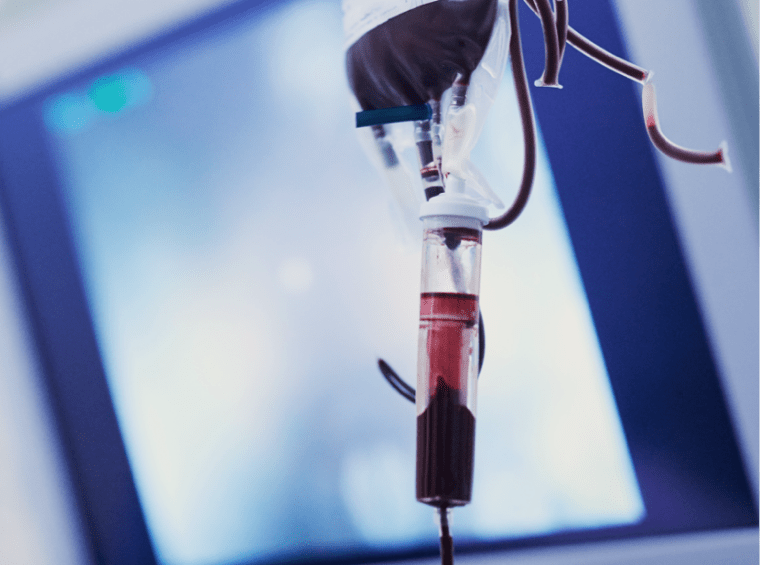Key Blood Components Used in Transfusion Therapy

Administering blood and blood components, such as red blood cells (RBC) and platelets properly involves close collaboration between laboratory staff and clinical personnel. Transfusion decisions should not solely be based on laboratory parameters but should consider the clinical condition of each patient.
Red Blood Cell Transfusion
About 10% of hospitalized patients in the US receive red cell transfusions. Red blood cells increase oxygen-carrying capacity and restore blood volume. Appropriate RBC transfusion strategies in the hospitalized adult patient have been subject to numerous clinical trials and meta-analyses. A restrictive over-liberal transfusion strategy was recommended in a 2016 AABB clinical practice guideline for adult patients if they were hemodynamically stable. In certain subgroups of patients, insufficient evidence is available to recommend restrictive transfusions, such as individuals with coronary heart disease, cardiac surgery or haematological malignancies and other hematologic disease. Equally, robust evidence is missing to show the benefit of transfusing fresh versus longer stored red blood cells.
Red blood cell transfusions are an integral component in the management of patients with sickle cell disease (SCD). Randomized controlled trials showing benefit of chronic RBC transfusions in SCD patients, however, have been done solely in the pediatric population with the strongest evidence for primary and secondary stroke prevention. Other complications are supported by moderate- to low-quality evidence only and further studies are needed to carefully evaluate the benefits over several important risk factors linked to transfusion events such as alloimmunization, delayed hemolytic transfusion reactions or hyperhemolysis.

Platelet Transfusions
Goals for platelet transfusion include compensation for a low platelet count or for platelet dysfunction. Prophylactic transfusions may be used for patients who have congenital or acquired dysfunctions or are undergoing invasive procedures, while therapeutic transfusions may be used for patients who are experiencing acute hemorrhagic events. Many studies are continuously looking into appropriate dosing, optimal threshold for transfusions as well as prophylactic versus therapeutic.

Transfusions of Other Blood Components
Transfusions of other blood components such as plasma and cryoprecipitates, have been increasingly governed through guidelines and best practice recommendations that have for goal the best usage of scarce blood reserves in the safest possible way for the patients.

References
Cohn CS, Delaney M, Johnson ST, Katz LM. Technical Manual 20th Edition, AABB Bethesda ML
Storch EK, Custer BS, Jacobs MR, Menitove JE, Mintz DZ. Review of current transfusions therapy and blood banking practices. Blood Reviews 2019; 38:PUBMED Link.
Carman M, Uhlenbrock JS, McClintock SM. A Review of Current Practice in Transfusion Therapy. Am J Nurs. 2018; 118(5):36-44.PUBMED Link.
Sharma D, Ogbenna AA, Kassim A, Andrews J. Transfusion support in patients with sickle cell disease. Semin Hematol. 2020; 57(2):39-50.PUBMED Link.